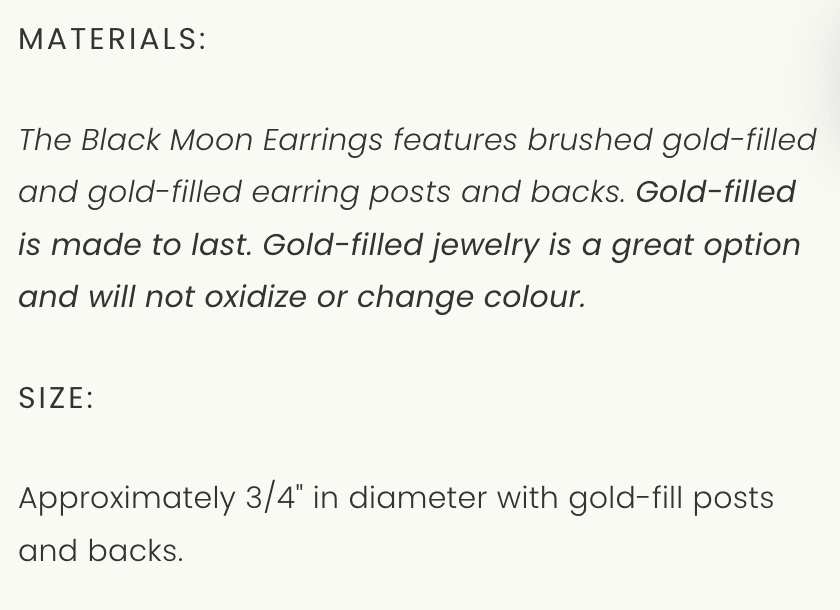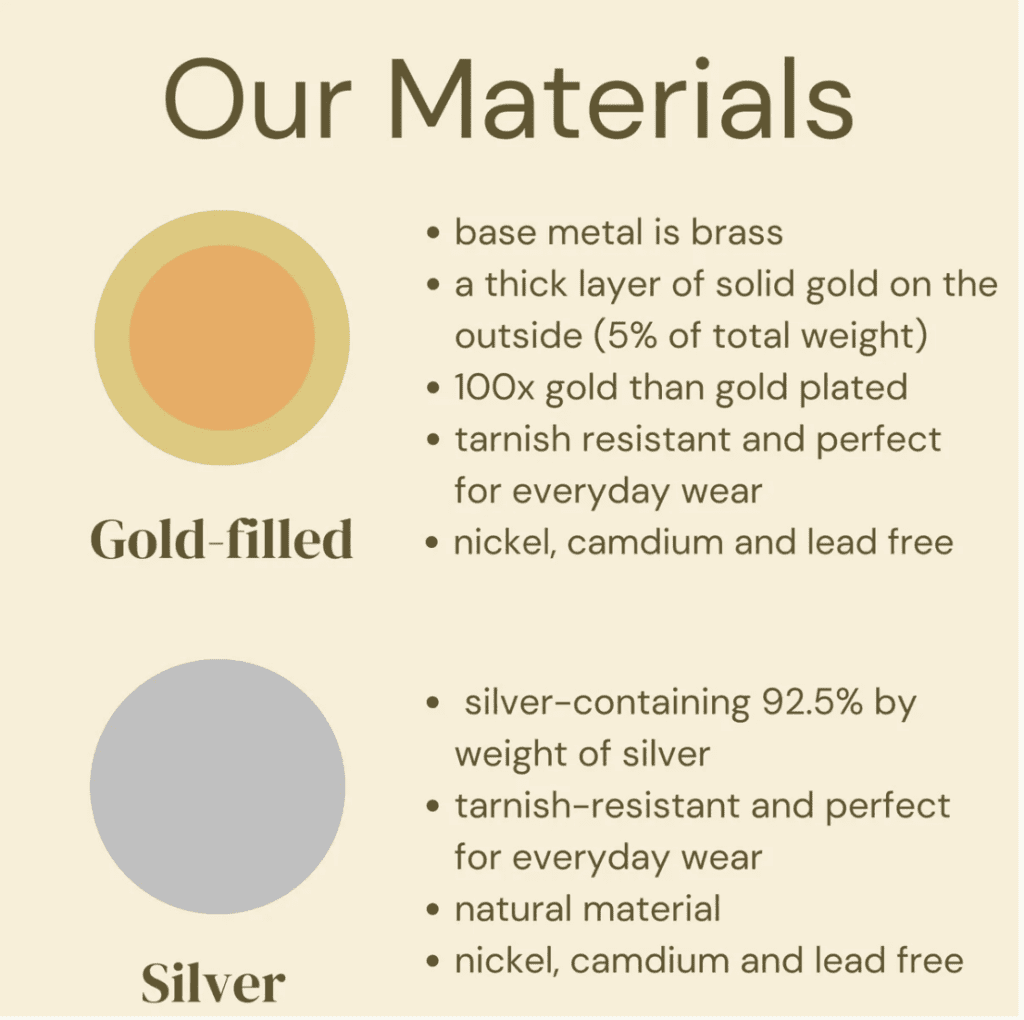
There are two sides to selling jewelry online. On one hand, it seems that everywhere you look, jewelry is being sold, and there is so much competition that it may seem an extremely difficult task.
On the other hand, there are brands that built their presence through years of careful marketing and are now reaping the benefits. Everything they released vanished from the digital shelves.
In this post, we will focus on all the places where you can sell jewelry. We will cover platforms that are tailored for business-level selling as well as the ones where you would sell just a piece or two.
Where To Sell Jewelry Online
If you’re looking to sell your jewelry online, there are plenty of options available to you. We will cover the main ones and try to pinpoint the main pros and cons.
Your final pick will depend on your needs, but this should give you enough guidance to make an educated decision.
Etsy
Etsy is a popular marketplace for handmade and vintage items, including jewelry. Setting up a shop on Etsy is easy, and the platform has a large and engaged community of buyers. You can customize your shop’s appearance and use Etsy’s tools to manage your inventory and orders.
Pros
- Large Customer Base: Etsy has millions of active users, providing a vast audience for your jewelry.
- User-Friendly Interface: The platform is easy to navigate for both sellers and buyers, making the process seamless.
Cons
- Competition: Due to its popularity, there’s significant competition, which can make it harder for new sellers to stand out.
- Fees: Etsy charges listing fees, transaction fees, and payment processing fees, which can add up.
If you are planning to pick Etsy, have a look at our post about Etsy inventory management.
Shopify
Shopify is an e-commerce platform that allows you to create your own online store. You can use one of their templates to design your store, and they offer a range of tools for managing your inventory, processing payments, and shipping your products.
Pros
- Complete Customization: You have full control over the look and functionality of your online store.
- Scalability: Shopify can handle everything from a few products to thousands, making it ideal for growth.
Cons
- Monthly Fees: Shopify charges a monthly subscription fee, which can be costly for smaller businesses.
- At the moment of writing this post, some users are reporting that it is too easy to copyright-strike a store.
TikTok Store
TikTok recently launched a feature that allows users to sell products directly through the app. If you have a TikTok account and create videos showcasing your jewelry, you can add a link to your store to make it easy for viewers to purchase your products.
Pros
- Social Media Reach: TikTok’s massive user base can help sellers reach a younger engaged audience.
- Interactive Selling: Live features and video content can showcase jewelry dynamically, enhancing buyer interest.
Cons
- Platform Dependence: Sales are directly tied to the TikTok platform, which may be limiting if the platform’s popularity wanes.
- Content Creation Required: Success on TikTok requires consistent, high-quality content creation, which can be resource-intensive.
Ebay
Ebay is a well-established marketplace that allows you to sell a variety of items, including jewelry. You can create your own listings and manage your inventory and orders through the platform.
Pros
- Auction or Fixed Price: Ebay offers flexibility in how you sell your items, including auction-style listings or fixed prices.
- Global Reach: Ebay has a large international user base, increasing the potential for sales.
Cons
- Fees: Ebay charges insertion fees, final value fees, and other charges that can impact profitability.
- Complexity: The site’s vast array of options and settings can be overwhelming for new users.
Amazon
Amazon is another popular marketplace that allows you to sell jewelry. You can create your own listings or use Amazon’s fulfillment service to store and ship your products.
Pros
- Massive Audience: Amazon’s global presence offers a vast customer base.
- Fulfillment by Amazon: Amazon’s logistics services can take care of storage, shipping, and customer service.
Cons
- Competitive Marketplace: Standing out among countless sellers can be challenging.
- Fee Structure: Amazon’s fee structure, including subscription and fulfillment costs, can be complex and expensive.
Squarespace
Squarespace is a website builder that allows you to create your own online store. They offer a range of templates and tools for managing your inventory, processing payments, and shipping your products.
Pros
- Design-Focused: Squarespace offers beautiful, customizable templates that can showcase jewelry in the best light.
- All-In-One Platform: It provides domain, hosting, and e-commerce capabilities, simplifying the online selling process.
Cons
- Limited Integrations: Compared to other platforms, there may be fewer third-party integrations available.
- Pricing: Monthly subscription fees can be high, especially for advanced features.
Self-Hosted
If you’re tech-savvy, you can create your own online store using a self-hosted platform like WooCommerce or Magento. This gives you complete control over your store’s design and functionality, but requires more technical knowledge than some of the other options on this list.
Pros
- Complete Ownership: You have full control over every aspect of your online store and customer experience.
- Flexibility: You can integrate numerous plugins and tools to enhance your store’s functionality.
Cons
- Technical Demands: Requires significant technical expertise or resources to set up and maintain.
- Upfront Costs: There may be higher initial costs for hosting, development, and maintenance.
Worthy
Worthy is a platform that specializes in selling high-end jewelry. You can send in your jewelry to be appraised and sold through their auction system. Worthy takes care of the marketing and payment processing, and you receive the proceeds from the sale.
Pros
- Expert Appraisal: Worthy provides professional appraisal services, ensuring your jewelry is priced accurately.
- Convenience: The auction format and marketing are handled by Worthy, reducing the workload for the seller.
Cons
- Limited Audience: The platform caters to a niche market, which may limit the number of potential buyers.
- Commission Fees: Worthy takes a percentage of the sale, which can be substantial for high-value items.
Ruby Lane
Ruby Lane is a marketplace that specializes in vintage and antique items, including jewelry. They have a strict vetting process for sellers, but if you’re accepted, you can set up your own shop and sell your products to their engaged community of buyers.
Pros
- Niche Market: Ruby Lane attracts customers specifically looking for vintage and unique jewelry.
- Community Aspect: The platform fosters a community of collectors and enthusiasts, which can be beneficial for sellers.
Cons
- Limited Audience: The focus on vintage and antique items means a smaller, more specialized audience.
- Seller Fees: There are monthly maintenance fees and listing costs that sellers need to consider.
Facebook Marketplace
Facebook Marketplace is a free platform that allows you to sell items to people in your local area. You can create listings for your jewelry and connect with potential buyers through the platform.
Pros
- No Listing Fees: Selling on Facebook Marketplace is free, which can increase profit margins.
- Local Reach: It’s easy to reach local buyers and arrange direct sales without shipping.
Cons
- Limited Features: The platform lacks advanced ecommerce features and analytics.
- Security Risks: Direct interaction with buyers means sellers must be cautious about scams and security.
Creating Effective Product Listings
You need to create effective product listings that stand out and attract potential buyers.
Quality Photography
High-quality photos are essential to showcase the beauty and uniqueness of your jewelry. Make sure to use a camera with good resolution and lighting to capture clear and detailed images. Consider taking photos from different angles and showing close-ups of any intricate details. Use a plain background to avoid distracting the viewer’s attention from the jewelry.
Vermillion Jewelry uses a gif with a very simple background to catch the eye. The movement adds to the image, and the simplicity of the shot is both on brand and effective at conveying what this pair of earrings will look like when worn.

Detailed Descriptions
Your product descriptions should be detailed and accurate to help buyers make an informed decision. Include information about the materials used, the size and weight of the jewelry, and any special features or characteristics.
Use descriptive words to convey the style, color, and overall look of the jewelry. Be honest about any flaws or imperfections, as this will build trust with potential buyers.





Need more information about how to write product descriptions that convert? We got you covered: How To Write Product Descriptions.
Pricing Strategy
Pricing your jewelry correctly is crucial to attract buyers and make a profit. Research the market to see what similar pieces are selling for and price your jewelry competitively. Consider offering discounts or promotions to entice buyers.
Be transparent about your pricing strategy and explain any factors that affect the price such as the rarity of the materials used or the complexity of the design.
Personal Touch
Adding a personal touch to your product listings can make them more memorable and engaging. Consider sharing the inspiration behind your jewelry or the story of how it was made. Include a handwritten note or a small gift with each purchase to show your appreciation. Respond promptly to any questions or concerns from buyers to demonstrate your commitment to customer satisfaction.The rick-rack ribbon and packaging from The Sunshine Club convey a strong personal involvement in this jewelry purchase:

Marketing Your Jewelry Online
When it comes to selling online, marketing your jewelry is key. You need to make sure that potential customers are aware of your brand and the products you offer.
Pay Per Click
Pay per click (PPC) advertising is a popular way to get your jewelry in front of potential customers. With this type of advertising, you only pay when someone clicks on your ad. Here are a few tips to make the most of your PPC campaigns:
- Use Targeted Keywords: Choose keywords that are relevant to your jewelry and your target audience.
- Create Compelling Ad Copy: Your ad copy should be clear, concise, and compelling. Use language that speaks to your target audience and highlights the unique features of your jewelry. (Need help? Use our AI Ads Assistant that is tailored for ecommerce!)
- Test and Refine: Continuously test and refine your PPC campaigns to improve your results. Monitor your click-through rates and adjust your campaigns as needed.
You can read more about ecommerce ads in our guide.
Social Media Marketing
Social media is another effective way to market your jewelry online. Here are a few tips to make the most of your social media marketing efforts:
- Choose the Right Platforms: Focus on the social media platforms where your target audience is most active. For example, if you’re targeting younger customers, you may want to focus on Instagram and TikTok.
- If you would like to start diversifying your organic and social inbound traffic, check out our post on Facebook and Pinterest traffic diversification.
- Engage With Your Audience: Respond to comments and messages promptly, and encourage your followers to share your content with their own networks.
- Create Engaging Content: Use high-quality images and videos to showcase your jewelry in the best possible light. Use captions and hashtags to make your content more discoverable. For illustration, here are some examples that are both eye catching and provide enough information to make a purchase decision:
This Pin from James Allen is visually appealing and loaded with information in both the Pin Title and Description.

The nine-grid on Lylie Jewellry’s Instagram feed is stunning! The colors blend well, the product shots are clear and appealing, and there is is visual interest from the variety of photos.

There are many more things that come into play when you are prepping your marketing strategy. If you are ready to dig deeper, here is a guide on marketing strategy creation.
Compound Growth
If you want to maximize your profits when selling jewelry online, you need to focus on compound growth.
This means that you should be constantly growing your customer base and engaging with them to keep them coming back for more.
Capture Emails
One of the best ways to grow your customer base is by capturing emails. This allows you to build a list of people who are interested in your jewelry and who you can market to in the future.
To capture emails, you can offer a free guide, discount, or other incentive in exchange for their email address.
Once you have their email, you can send them targeted marketing messages to encourage them to make a purchase.
Retargeting Ads
These ads target people who have already visited your website but didn’t make a purchase. By showing them ads for the specific products they viewed, you can encourage them to come back and make a purchase.
Retargeting ads are highly effective because they target people who have already shown an interest in your products.
Community Growth
Finally, community growth is essential for long-term success when selling jewelry online. This means building a community of customers who are loyal to your brand and who will recommend your products to others.
You can do this by engaging with your customers on social media, offering rewards for referrals, and creating a sense of exclusivity around your products.
Conclusion
Jewelry business is tough. Apart from all the usual challenges of ecommerce, you also have to nail down the design and the brand that surrounds it.
Don’t get discouraged if you won’t get it right on your first or second time. Stay persistent and, most importantly, keep testing new things!







